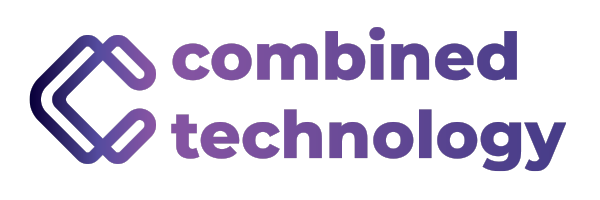As businesses grow and technology evolves, the complexity of maintaining an efficient and secure IT environment often becomes overwhelming for in-house teams. While some organizations still handle IT operations internally, many are turning to managed IT services to get the specialized expertise, advanced security, and proactive support needed to stay competitive. Wondering if it’s time for your company to transition to a Managed IT Provider?
Here are the key signs that indicate the need for a more strategic and reliable IT solution.
1. Frequent IT Downtime and Disruptions
If your in-house IT team struggles to prevent recurring outages or resolve technical issues quickly, it can lead to costly downtime. Managing IT internally can mean juggling day-to-day tasks with limited staff and resources, resulting in slow response times and frequent disruptions. A Managed IT Provider offers proactive monitoring and rapid incident response, helping your business maintain smooth operations and minimize productivity loss.
2. Rising IT Costs Without Predictable Budgeting
In-house IT budgets can be unpredictable: from unplanned hardware repairs and overtime costs for IT staff to emergency software fixes. If your internal IT expenses continue to skyrocket without clear forecasting, it might be time to consider the predictable monthly costs of a Managed IT Provider. This model helps you plan IT spending more accurately, eliminating financial surprises and saving your organization money in the long run.
3. Lack of IT Security and Compliance
Keeping pace with ever-evolving cybersecurity threats is challenging for a small internal IT team. If your existing setup doesn’t implement robust security measures and continuous monitoring—or if you’re unsure about compliance requirements—your business could be at serious risk. Managed IT Providers specialize in security, offering around-the-clock monitoring, advanced threat detection, and compliance management to protect your systems and data.
4. Problem Resolution Delays
When IT problems arise, a delayed response can hamper productivity and cause frustration among employees. If your in-house team is stretched too thin or lacks specialized expertise in certain areas, it can take much longer to address urgent issues. By switching to a Managed IT Provider, you’ll benefit from efficient support ticket management, fast escalation paths, and dedicated specialists ready to tackle your IT challenges.
5. Limited Scalability and Growth Support
As your business expands or adopts new technologies, you need an IT environment that can scale quickly. In-house teams sometimes struggle to keep up with these demands, especially if they are already at capacity or lack the training to implement advanced solutions. A Managed IT Provider offers scalable, on-demand services to meet your evolving needs, ensuring that technology never becomes a bottleneck to growth.
6. Inconsistent Data Backup and Recovery Plans
Data loss can be devastating, yet many organizations don’t have a clear in-house disaster recovery plan or reliable backups. If your IT staff is too busy troubleshooting everyday issues, backups and recovery processes might be neglected. Transitioning to a Managed IT Provider ensures automated, regular backups and a well-tested disaster recovery strategy to protect your critical business information.
Uncertain about which IT service model fits your business best?
Our team is here to help you navigate the options and answer all your questions so you can make the best decision for your business. Get in touch for a free assessment today!
7. Outdated Technology and Software
With constant developments in hardware, software, and cybersecurity, your technology environment requires frequent updates and upgrades. If your in-house IT resources are strained, these critical tasks can slip through the cracks, leading to outdated systems and increased security vulnerabilities. A Managed IT Provider helps you stay current with the latest technology and implements proactive maintenance to prevent failures.
8. Inadequate Cloud Solutions and Remote Work Support
Modern workplaces are increasingly reliant on cloud services, remote collaboration tools, and secure VPNs to support distributed teams. If your in-house IT staff lacks the expertise to implement or manage these technologies effectively, it can hamper productivity and data security. A Managed IT Provider has dedicated specialists who can seamlessly integrate cloud solutions, ensuring your team can work securely from anywhere.
9. You’re Spending Too Much Time on IT Instead of Growing Your Business
As a business leader, your focus should be on strategic initiatives, not troubleshooting IT issues. If you or other key employees are constantly pulled away from core responsibilities to handle tech problems, it’s a sign that an in-house approach may no longer be the most efficient model. Partnering with a Managed IT Provider offloads these responsibilities, freeing you to concentrate on growing your business.
10. Lack of Employee Education
An in-house team often has limited time for training others on best practices or emerging technologies. When employees aren’t educated about cybersecurity threats or new software tools, it can lead to mistakes, inefficiencies, and security risks. A Managed IT Provider typically includes training sessions, webinars, and ongoing education, empowering your staff to use technology more effectively and safely.
11. Confusing Technical Jargon
IT professionals can sometimes get lost in the weeds of technical language, making it difficult for non-technical staff to make informed decisions. If your in-house IT team struggles to communicate complex issues clearly, it can lead to misunderstandings and stalled projects. A quality Managed IT Provider uses straightforward language, ensuring you and your employees understand the technical aspects that impact business decisions.
12. Lack of Accountability
When IT systems are managed internally, it can be challenging to maintain an unbiased perspective or enforce accountability if problems recur. If you notice repeated mistakes or a lack of responsibility within your in-house team, you could be missing the transparency and service-level guarantees a Managed IT Provider brings. Providers typically stand behind their work, offering service-level agreements (SLAs) and clear escalation paths to resolve issues promptly.
13. Lack of Strategic Guidance
Your internal IT department may be capable of handling daily tasks but may lack the breadth of knowledge or resources for larger-scale strategic planning. Without a future-focused outlook, covering new technologies, cybersecurity standards, and long-term investment planning, your business could fall behind competitors. A Managed IT Provider not only maintains your systems but also guides you on aligning IT strategy with your business goals for sustainable growth and innovation.
Switching from an in-house IT model to a Managed IT Provider is a proactive step toward enhancing efficiency, security, and scalability. If you’re considering outsourcing your IT but want to learn more about the benefits and costs involved, this in-depth guide explains why Managed IT Services might be the right solution for your business.
If you find your organization wrestling with frequent downtime, unpredictable costs, security vulnerabilities, or limited growth, it may be time to make the transition.
Contact Combined Technology today to learn how our Managed IT Services can help streamline your operations, protect your data, and support your business as it continues to evolve. We’re here to ensure your technology remains an asset rather than an obstacle.
Get in Touch with Us

Safeguard Your Business with Tulsa's Top Managed IT Provider
At Combined Technology, we provide a flexible, tailored approach to meet your evolving IT needs. Safeguard your business against emerging threats with our expert-managed IT services and customized cybersecurity solutions.





